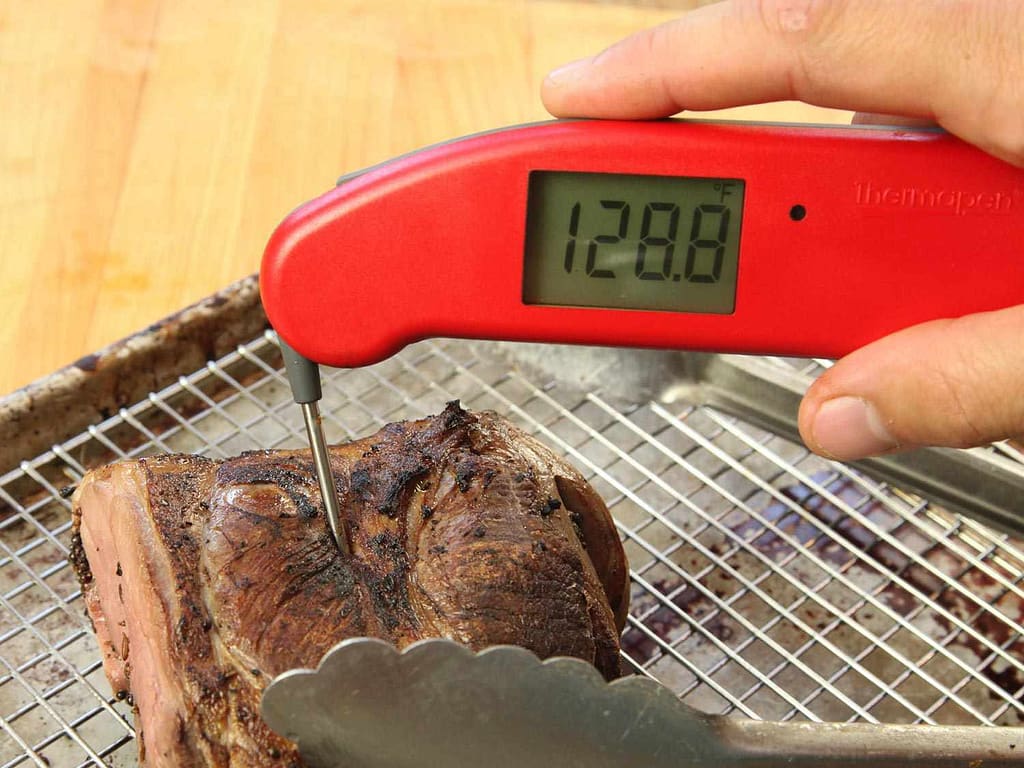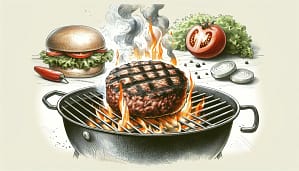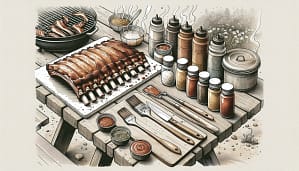What is a Meat thermometer? How to choose one?

What is a Meat thermometer? How to Choose one?
A meat thermometer is a tool used to measure the internal temperature of meat, including poultry, beef, pork, lamb, and fish. It is an essential tool for cooking meat safely and accurately.
A meat thermometer typically consists of a long, thin probe with a pointed end that can be inserted into the thickest part of the meat. The probe is attached to a digital display that shows the temperature reading. The probe can be left in the meat while it cooks in the oven, grill, or smoker, allowing you to monitor the temperature without opening the oven or grill and losing heat.
There are two main types of meat thermometers: analog and digital. Analog meat thermometers have a dial that shows the temperature reading, while digital thermometers use an electronic display. Digital thermometers are typically more accurate and easier to read than analog thermometers.
Using a meat thermometer is important to ensure that meat is cooked to a safe temperature, which can help to prevent foodborne illnesses. The USDA recommends cooking poultry to a minimum internal temperature of 165°F (74°C) and beef, pork, lamb, and fish to a minimum internal temperature of 145°F (63°C).

MEATER Plus | Smart Meat Thermometer with Bluetooth | 165ft Wireless Range
100% WIRE-FREE that’s perfect for outdoor cooking. The first truly wireless smart meat thermometer. Monitor your cook using the FREE app available for iOS (10.3 and later) / Android (5.0 and later) smart phones and tablets.

Lavatools Javelin PRO Duo Ambidextrous Backlit Professional Digital Instant Read Meat Thermometer
Intelligent stabilization alert and read-out hold function with integrated magnet for convenient storage. NSF certified superior build quality like nothing else on the market. Backed by an industry-leading 3-year limited warranty.

Wireless Meat Thermometer with 4 Probes Digital Grill Thermometer, Bluetooth Grill BBQ Meat Thermometer
This wireless BBQ thermometer will remind you anywhere and anytime. The grill thermometer allows you to pair with Phone or iPad
Type of Meat thermometer?
There are several types of meat thermometers available on the market. Here are the most common types:
- Instant-read thermometers: These thermometers provide a quick temperature reading within a few seconds when inserted into the meat. They are great for checking the temperature of cooked meat, but not recommended for use while the meat is cooking, as you need to open the oven or grill to use them.
- Probe thermometers: These thermometers have a long probe that can be inserted into the meat and left in place while the meat is cooking. They usually have a digital display that shows the temperature, making them easy to read. Some models come with multiple probes to allow you to monitor the temperature of different meats or different parts of the same meat.
- Oven-safe thermometers: These thermometers can be inserted into the meat before it is placed in the oven and left in place while the meat cooks. They are typically made of stainless steel and can withstand high oven temperatures. They are useful for monitoring the temperature of roasts or other large cuts of meat.
- Wireless thermometers: These thermometers come with a transmitter and a receiver that communicate wirelessly. The transmitter is placed in the meat, and the receiver can be carried around or placed on a countertop. The receiver displays the temperature and alerts you when the meat has reached the desired temperature.
No matter which type of meat thermometer you choose, it’s important to select a model that is accurate and easy to use. It’s also important to clean and sanitize your meat thermometer after each use to prevent the spread of bacteria.

Material of meat thermometer ?
Meat thermometers are made of different materials depending on the type and design of the thermometer. Here are some common materials used in meat thermometers:
- Stainless steel: Stainless steel is a popular material for meat thermometer probes, as it is durable, easy to clean, and can withstand high temperatures.
- Plastic: Some meat thermometers have plastic components, such as the handle or the digital display. Plastic is lightweight and easy to handle, but it may not be as durable as other materials.
- Glass: Glass thermometers were once commonly used for meat thermometers, but they are not as popular now due to safety concerns. Glass can break easily and may pose a risk of injury or contamination if it comes into contact with food.
- Silicone: Silicone is a flexible and heat-resistant material that is sometimes used for meat thermometer probes. It can bend without breaking, making it easy to insert into meat.
- Copper: Copper is an excellent conductor of heat, which makes it a popular material for some meat thermometers. However, copper can tarnish over time and may require polishing to maintain
In general, stainless steel is a good choice for meat thermometers as it is durable and can withstand high temperatures. It is also easy to clean and won’t rust or corrode. However, make sure that the thermometer is made of food-grade stainless steel, which is safe for use with food.
How to choose a meat thermometer ?
Choosing a meat thermometer can depend on your needs, preferences, and budget. Here are some factors to consider when choosing a meat thermometer:
- Type of Thermometer: There are various types of meat thermometers, including instant-read thermometers, probe thermometers, and wireless thermometers. Instant-read thermometers are quick and easy to use, while probe thermometers are ideal for monitoring the temperature of meat as it cooks. Wireless thermometers can be helpful for monitoring the temperature of meat from a distance.
- Temperature Range: Consider the temperature range of the thermometer, especially if you plan to use it for cooking different types of meat. Some thermometers have a wider temperature range than others, so make sure to choose one that will meet your needs.
- Accuracy: Look for a thermometer that is accurate and reliable. Check reviews and ratings to see how well the thermometer performs.
- Durability: A meat thermometer should be durable enough to withstand high temperatures and frequent use. Stainless steel and silicone are good options for durability.
- Ease of Use: Choose a meat thermometer that is easy to use and read. Some thermometers have digital displays, while others use analog dials. Make sure the thermometer is easy to clean and store.
- Price: Meat thermometers can range in price from a few dollars to over $100. Consider your budget and choose a thermometer that meets your needs without breaking the bank.
Overall, the most important factors to consider when choosing a meat thermometer are accuracy, durability, and ease of use. Look for a thermometer that meets your needs and preferences and fits within your budget.



